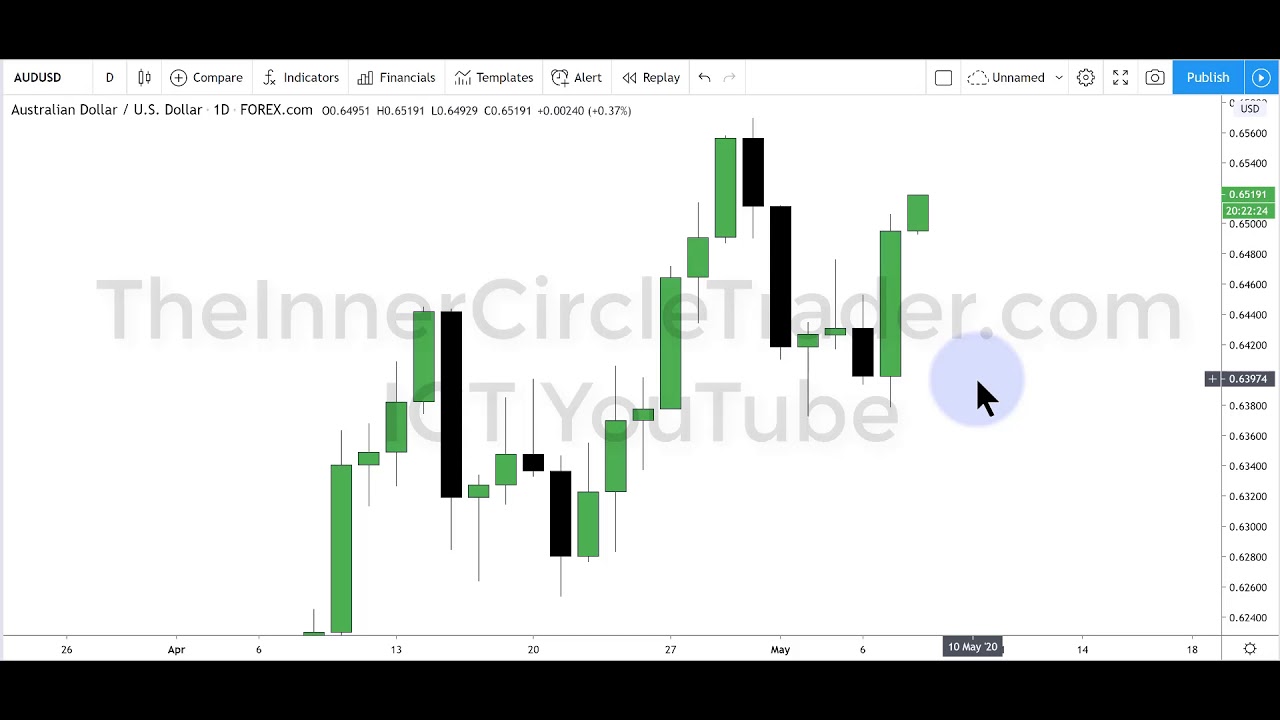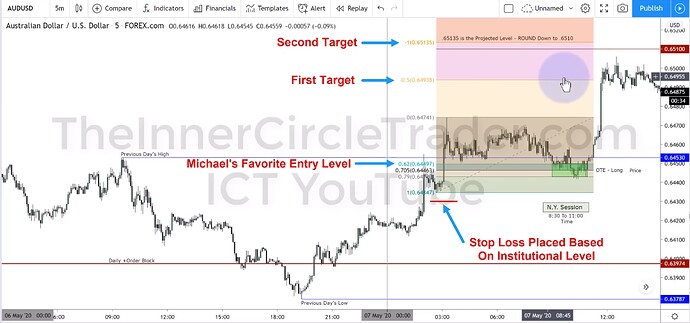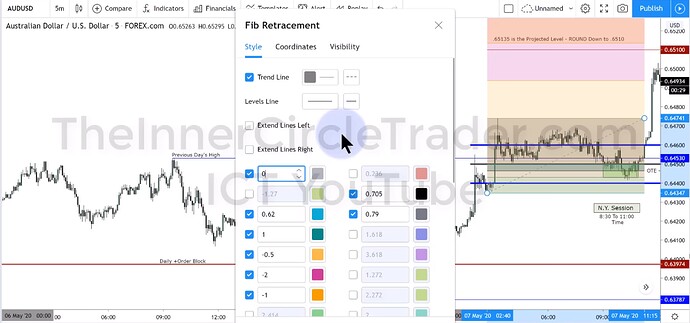Notes
- Before studying this series, the student should first watch the video ICT Forex - Market Maker Primer Course - Intro To ICT Optimal Trade Entry.
- It is always crucial to be aware of the previous day’s highs and lows.
- We also need to identify institutional levels, around the previous day’s highs and lows. Institutions use these levels to place orders.
- Institutional levels:
- Big-figure levels - 00 levels, such as 1800, 1.200, 96.00.
- Mid-figure levels - 50 levels, such as 1850, 1.250, 96.50.
- 80-20 levels - For example, 1820, 1880, 1.220, 1280, 96.20, 96.80.
- Small-rounded levels - Levels like 1810, 1830, 1,2230, 96.70, 96.90.
- Trading OTE levels is not simply trading Fibonacci levels. The key is the time we use these levels.
- This series does not teach the general use of OTE levels. It aims to teach a specific OTE model.
- Following this model, we look for entry opportunities during the New York session, specifically between 8:30 a.m. and 11:00 a.m.
- We look for movement above or below the previous day’s high (or the previous days’ highs) or below the previous day’s low (or the previous days’ lows).
- Optimal Trade Entry levels:
- 62%
- 70,5% - Midpoint
- 79%
- Michael likes to use the 62% level for his trade entries.
- Stop loss should be placed based on the logical institutional level.
- The distance from the entry to the first target must be at least 15 pips.
- Fibonacci extensions can be used as targets.
- Michael looks for trade exits around institutional levels.
- This model does not require a daily bias determination.
- After hitting the first target, we move the stop loss to 50% (0,5) of the original range.
[Bullish Order Block On AUDUSD Daily Chart
AUDUSD OTE Trade Example
Fibonacci Tool - OTE Settings
Next lesson: ICT OTE Pattern Recognition Series - Volume 2



